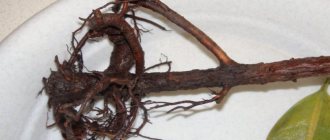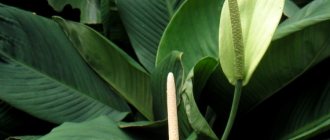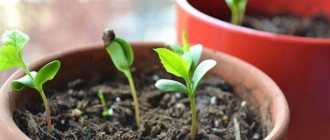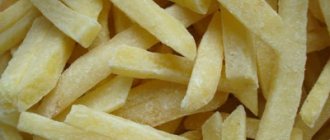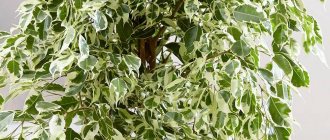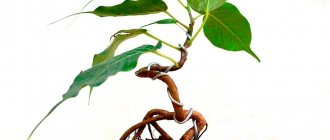Why do ficus benjamina leaves fall?
What problem does your ficus have?
Drops leaves
22.66%
Leaves turn yellow and fall off
68.19%
Ficus is completely bald
9.15%
Ficus benjamina is a resident of the humid tropics. It can be forced to shed its vegetative organs:
- natural aging;
- incorrect location of the flower;
- maintenance and care errors;
- pests or diseases.
Benjamin varieties have the smallest leaf blades; they will be shed when Elastica, Binnendijka, Lyre-shaped species feel only slight discomfort.
in winter
Most often, leaves begin to fall off during the dormant period. This time is the most unfavorable for the plant; it requires increased attention and careful handling.
Physiological reasons
If the ficus does not look unhealthy and only sheds the lower or skeletal branches of the plates at the base, this is most likely a natural process.
Each leaf, even under the most favorable conditions, lives no more than 3 years, and then flies around. This usually happens during a period of relative rest.
In winter, an adult ficus benjamina can shed 10-20% of the crown, but with the start of sap flow it will quickly restore it. There is no reason to worry, nothing needs to be done. It should cause alarm if a young plant begins to lose leaves, especially at once and a lot.
Stress
All ficuses, especially those belonging to the Benjamin species, do not like changes. Leaf fall causes:
- adaptation to a new place after purchase;
- normal permutation;
- if the tree is sharply turned with the other side towards a light source located on the side.
Temperature violation
With the start of the heating season, ficus trees feel uncomfortable. And they react to changing conditions by falling leaves, and may even go completely bald.
In winter, ficus leaves often turn yellow and fall off because of this. It is better to check the reason first. Cold conditions coupled with waterlogging are especially dangerous.
During the dormant period, the temperature should be lower than in summer - 15-19 ° C. The minimum that a ficus species of Benjamin can tolerate is 12 ° C. If the foliage is drooping, looks lethargic, or begins to curl, the temperature in the room should be urgently raised. It is unlikely that it will be possible to bring a plant back to life, even if it has stood in the cold for a short time.
It is necessary to control not only the temperature of the air, but also the soil. In winter, they can differ significantly, especially for flowers standing on windowsills. And with any changes, the owners risk being left with a bare plant.
You cannot place the pot close to heating devices - the ficus will shed its leaves due to the heat. When placed close to the window glass, the branches pressed against it will be exposed.
Lack of light
Ficus Benjamin, except for variegated varieties, is not too demanding on lighting. But in winter the sun is not enough for him either.
You cannot place a flower on a bright, southern windowsill, even if the air temperature in the house is comfortable. First, it will shed the plates pressed against the cold glass, then the roots in the pot will freeze, wither, and the remaining vegetative organs will begin to fall off.
The only way to maintain an attractive appearance and prevent exposed branches is with additional lighting. You need to do it 10-12 hours a day.
Dry air
When there is insufficient moisture, Ficus benjamina drops its leaves and turns yellow. In winter it is especially dry due to heating devices. To prevent evaporation, the plant first sheds its leaves. Ficus benjamina should be sprayed no less often than in summer, and more often when the temperature in the room is high.
If nothing is done, thin branches will gradually dry out. As an extreme case, at temperatures exceeding 25° C, damage can even affect the trunk.
Drafts
Ficus generally does not like drafts, and in winter the air is also cold. A tree standing under a window, even after one airing, often completely sheds its leaves.
Care errors
In winter, ficus trees suffer due to improper watering. They shed their leaves from both excess and lack of moisture.
Often, “advanced” gardeners, in order to ensure a dormant period, begin to rarely water the plant at high room temperatures. As a result, the soil in the pot dries out, the leaves first turn yellow, and then the ficus drops them.
If you pay attention to the problem too late, it is not always possible to revive the tree - the root suffers greatly from drying out. It is easier to revive flowers in summer or spring, but in winter the growth processes are suspended, and rescue measures may not lead to success.
You can’t overwater Ficus Benjamin either. After the end of the growing season, it consumes less moisture, the soil in the pot may turn sour, and the root may rot. The plant is highly likely to die.
The lower the temperature, the less frequently the ficus should be watered. If the room is warm, the substrate should not dry out. You only need to use warm, settled water.
In autumn or winter, there should not even be any talk about replanting or excessive feeding. This will not only cause the leaves to fall off, but the ficus may not recover from such treatment.
in spring
With the beginning of the growing season, the ficus begins to grow leaves that have fallen off in winter due to dry air, too warm or cold conditions. But he continues to throw off the plates for the same reasons:
- low humidity;
- heat;
- too rare or frequent watering;
- drafts - air conditioning and fans are added to ventilation.
As the weather warms up, the plant will have other reasons to shed its leaves. In order for the ficus to remain beautiful, you need to know them and prevent them.
Transfer
Even if the ficus is transplanted correctly, the plant will become stressed and shed some of its leaves. There is no need to save it - new ones will appear soon.
To grow a healthy plant, the pot should not be too cramped - there the root takes up almost all the free space, there is always a lack of nutrition and moisture. In a large container you will have to deal with soil soaking, the bush will be lethargic, grow poorly, and drop leaves.
Feeding
Excess and insufficient amounts of nutrients in equal measure cause the plant to shed its leaves. You should use only fertilizers for decorative leafy crops, and even better - specialized ones. Fertilizers for ficus should be used strictly according to the instructions. The concentration cannot be exceeded.
When we talk about alternating mineral and organic fertilizers, we mean ready-made preparations sold in specialized stores.
An infusion of mullein or bird droppings is good in the garden. It is not recommended to feed potted crops with them. Even one watering with homemade organic matter can lead to diseases or pests.
Bright sun
In spring or summer, ficus can get sunburn, especially when standing close to a window. The exception is the variegated varieties of Benjamin. The larger the area occupied by white spots or borders on the plates, the more intense the lighting should be.
The ideal place for the pot is next to the window, not on the windowsill. When the leaves are completely green, in direct sun the Benjamin ficus will shed them.
Trimming
If you make a cut close to a bud, the plate on it, and then the branch to the next node, will dry out. I'll have to cut them off too.
Leaf fall can cause the removal of several thick skeletal branches at the same time on a ring in an adult tree. Rejuvenating pruning or shaping of an old plant should be done gradually.
Incorrect placement on the street
When it gets warm, Benjamin's ficuses are often taken out onto the balcony or into the yard. They will shed leaves:
- when placed in the scorching sun;
- under gusts of wind;
- when pots are not removed from the street during cold weather;
- from differences in day and night temperatures;
- because of the flood in the rain.
If the pot is going to be placed outside, you should carefully choose the location. And protect the plant from unfavorable factors. In any case, it still resets a certain number of plates due to rearrangement.
Unnatural causes of leaf falling
In the case when a ficus tree has been growing at home for quite a long time, and the leaves begin to fall in the spring or summer, then you need to carefully think about what caused and led to such a situation.
It could be:
- frequent rearrangement of the flower pot;
- unsuccessful transplant;
- lighting problems;
- drafts;
- non-compliance with temperature conditions;
- low humidity;
- improper watering;
- lack of fertilizers;
- diseases and pests.
Having identified an error in care, salvation will come on its own when the gardener returns to proper care.
Frequently rearranging the flower pot
Ficus benjamina or any other species is not a plant that welcomes constant “moving”. If the tree is constantly moved or moved from place to place, then it will spend all its strength trying to adapt to new conditions. And if so, then the ficus will rapidly lose its green mass.
Failed transplant
After each transplant into a new substrate, ficus trees may lose leaf blades in small quantities. If after a while the flower dries out and heavy leaf fall is noticed, it means that the plant was transplanted into unsuitable soil. In cases where the ficus is replanted frequently, it may also begin to lose green mass in response to severe stress.
Lighting problems
Almost all types of ficus need bright lighting. True, you should not place a flowerpot with a flower so that the sun shines clearly on it. In this case, the leaves will become hard and dry, and after a while they will completely fall off. Therefore, it is better to shade the tree a little in strong sunshine, but not hide it in a dark room, since in this case the plant will not dry out, but will fade due to lack of lighting.
Drafts
When deciding to buy a ficus, you need to remember that there should be no drafts in the house . All of them are destructive to the flower. When growing a plant at home, it needs to create suitable conditions. By the way, putting the flowerpot in a place where the air conditioner blows is also not worth it.
Failure to comply with temperature conditions
Correct temperature conditions are the key to good growth and condition of the plant. In winter, the temperature should not be lower than +18 °C, and in summer – above +25 °C. If the flower is drying, but the room is not hot, then most likely the pot is located next to heating devices.
Low humidity
It is a mistake to think that ficus will grow in a room with low humidity. These plants react sharply to such a nuance. The leaves begin to quickly darken and disappear. To prevent this from happening, you need to ensure that the humidity in the room is kept at 50-70%.
Watering
Manipulation should be carried out as needed. Many gardeners once read that this is done a couple of times a week, and so follow the erroneous recommendation. And then it turns out that the leaf plates become covered with brown spots and the flower dies. Such a moment signals rotting of the root system. If, on the contrary, the flower is completely dry, then they forgot to water it for many weeks.
No fertilizer
If the substrate lacks useful substances, the ficus may begin to wither, the leaf plates will curl and crumble. This can also happen if there is an excess of fertilizing in the soil. This point must be monitored carefully.
Diseases and pests
If a flower literally begins to wither before our eyes, it has dried out or lost its vitality, it means that some pests have infested it, sucking all the juice out of the plant. Almost all parasites can be visualized - they are located either on leaf blades or in the soil.
Why do the leaves of ficus benjamina turn yellow?
Often the foliage of Ficus Benjamin turns yellow before falling. Chlorosis occurs for several reasons:
- aging (natural process);
- lack or imbalance of nutrients;
- hot content;
- excess light;
- pest damage.
To prevent the leaves from turning yellow due to the incorrect pH of the soil (it should be neutral or slightly acidic), it is recommended not to make a soil mixture, but to buy it in specialized stores.
In addition, it is difficult to qualitatively disinfect the ingredients for preparing the substrate yourself at home; it is unknown what elements they are saturated with. Pest larvae and pathogens may lurk there. Yellowing and leaf fall are often caused by homemade soil.
Diseases and pests
You should inspect the plant daily, paying attention to changes in the appearance of the leaves - their color, outline, smoothness. Some pests, such as scale insects, are visible to the naked eye. Traces of the vital activity of others, such as spider mites, can also be examined with some effort. In this case, they look like a thin web, but the pest itself can be seen through a magnifying glass or in a magnified photograph.
To combat spider mites, you can use folk remedies (soap solution, infusion of chamomile, garlic, etc.) or classic, time-tested drugs - “Aktellik”, “Fitoverm”, “Neoton” and others.
Ficus benjamina may also begin to lose leaves as a result of root rot damage that occurs due to improper care. In this case, the plant can be cured only by one method - surgically, cutting off the darkened, softened areas of the roots and replanting the plant in new soil. After this, the soil in the pot must be spilled with a solution of carbendazim (fungicide). It will also be necessary to prune the crown so that the plant spends all its energy on recovery, and not on maintaining green mass. The removed branches should be in the same percentage ratio to the remaining ones as the pruned roots damaged by the disease are to the healthy ones.
Other diseases worth mentioning are anthracnose and cercospora. These are fungal diseases that appear on the leaves as brown spots in the first case and black dots in the second case. The plant must be urgently treated with a fungicide, otherwise the leaves will begin to fall off and the Benjamin ficus may die.
Why do the tips of the leaves of ficus benjamina dry out?
The main reason is dry air. The ends dry out first. By correcting the situation, you can stop the shedding of the plates, but you will not be able to restore the decorative effect.
Insufficient humidity is caused by:
- high air temperature;
- sunny location - water evaporates quickly;
- proximity of heating devices;
- owners ignore spraying.
How to prevent
If you notice the beginning of leaf fall in time, and determine that this process is not associated with natural causes, you must immediately take certain actions to save the flower (Figure 4).
Here's how to prevent ficus leaves from falling:
- Check the quality and degree of soil moisture: if it is too wet, stop watering completely for two weeks. If after this the plant does not recover, replant it into new and moderately moist soil.
- Feed the plant: perhaps you have not added nutrients to the soil for too long, and your flower simply does not have enough microelements.
- Check the plant for pests: to do this, just inspect the soil and above-ground parts. If insects are found, they must be destroyed with special chemicals.
- Inspect the root system: to do this, you need to carefully remove the plant from the pot and check whether the roots have rotted. If such areas are noticed, they should be cut off, the sections should be treated with crushed coal, and the plant itself should be transplanted into a new pot with fresh soil.
Figure 4. Proper care at home
It is important to remember that the ficus should not be watered or fed too intensively. It is also advisable to decide in advance on its location: the plant reacts negatively to a change in environment.
More information about the reason for the shedding of leaves in this crop is given in the video.
Ficus benjamina sheds leaves and turns yellow: what to do
You need to properly care for the ficus, choose a place for the pot in accordance with the requirements of the culture. Only then will it be beautiful, as in the photo, and will not shed its leaves.
Accommodation
On a northern window, Ficus Benjamin may not have enough light even in summer. It will not necessarily shed its leaves, but the plates will become pale. Variegated varieties have no place there - the white areas will turn green, but as soon as the light intensity increases, they will begin to lighten and quickly acquire their previous color.
The sun is too bright on the south window. The dark leaves there will be covered with spots from burns, will wither and crumble. The pot can be placed at a distance of a meter, for example, on a table or a special stand. Tall varieties feel great on the floor.
The best place is 20 cm from the western or eastern window. If the sun is too bright at midday in summer, it is enough to cover the bush with a light curtain.
It is not recommended to place the pot in front of the air conditioner, balcony door or window that is opened for ventilation. Ficus benjamina almost always sheds its leaves due to drafts.
In winter, the tree should be placed away from heating appliances. They dry out the air and the plant will dry out.
Correcting errors in care
You can only help Ficus Benjamin by regulating its maintenance and care. The basic rules have already been mentioned in the article, all that remains is to put them together:
- Bright location away from direct sunlight. You can place the pot at a distance from the window, or protect the plant with a light curtain. In winter, they provide illumination 10-12 hours a day.
- Moderate uniform watering. It is impossible to create a schedule. The top layer should dry by 1.5-2 cm; to check the need for moisture, the index finger is immersed along the first phalanx into the substrate. In the tubs, the soil is allowed to dry by 3-4 cm. Only warm, settled water is used.
- The pot must have drainage.
- Feeding from March to September with specialized balanced fertilizers.
- Air humidity is increased by spraying the aboveground part 2-3 times a day. A warm shower is helpful in summer. You can place a humidifier or water-filled bowls between the plants.
- Temperature 18-23°C in summer, 15-18°C in winter. It should not fall below 12°C.
- Regular inspection of the tree to identify pests and diseases. The earlier a problem is detected, the easier it is to deal with it.
- No drafts.
- The location of the pot needs to be thought out before purchasing the plant - it does not like rearrangements.
- Ficus benjamina should not come into contact with the window glass. In winter this will cause frostbite, in summer it will cause burns.
- Crown formation.
- Timely transplants and the “correct” pot size. A cramped or too large container will lead to leaf fall. The operation is carried out in the spring.
Even if the owners allowed overflow during the dormant period, replanting should not be done in the fall or winter. The earthen lump is taken out, dried on newspaper, and returned to the pot. The exception is that the root has rotted. But here we are no longer talking about correcting care errors, but about resuscitation.
Ficus lovers will find this video useful:
Feeding
The plant is fed from March to September with fertilizers for ficus or decorative deciduous crops (Agricola, Forte, etc.). There, all nutrients are balanced, nitrogen predominates, which is necessary for the growth and development of green mass.
A deficiency of macro- and microelements can cause the ficus to change color and shed its plates:
- Nitrogen - the foliage turns pale, becomes smaller, growth is inhibited. Yellowing begins with the veins on the lower plates.
- A lack of phosphorus primarily affects the base of the ficus. Vegetative organs become smaller, but do not turn yellow, but become dark and dull, and in especially advanced cases they turn black before falling off.
- Potassium starvation at the initial stage makes the leaves faded, then they turn yellow, turn brown, the edges curl, and the middle part wrinkles. The shoots become sluggish and droop.
- Calcium deficiency appears on young shoots. The growing point is damaged or dies, the leaves turn pale, curl upward, and brown spots appear.
- If the ficus does not receive enough magnesium, the edges of the plates and the interveinal space become covered with yellow, reddish or purple spots and then die. The tips bend, the edges wrinkle, the ficus sheds its leaves, starting with the lower ones.
- With a lack of iron, chlorosis occurs from top to bottom. The interveinal space uniformly first turns pale, then turns yellow, and can turn completely white before falling off.
Macro- and mesoelements - nitrogen, potassium, calcium, phosphorus - are given with irrigation. Microelements are better absorbed through spraying the aboveground part.
Disease and pest control
Ficus often sheds its leaves due to pest damage:
- spider mite - can only be seen with a magnifying glass, the vegetative organs turn yellow, a thin cobweb forms on the underside, a dust-like coating;
- aphids - stick to young shoots and petioles, usually infect plants exposed outside or in greenhouses;
- scale insects are inactive, look like small elongated plaques covered with a waxy coating, it is extremely difficult to fight the pest, you need to combine chemical and mechanical methods, severely affected ficus is easier to throw away;
- Mealybug - white fluffy coating on the trunk and in the axils of the leaves.
Pests of indoor plants are traditionally fought with the help of Aktara. If owners want to use other insecticides, drugs that have an acaricidal effect should be used against spider mites.
Ficus Benjamin diseases are usually a variety of rots that appear as a result of overwatering. Sometimes rust, sooty fungus or powdery mildew are brought in from the street. The flower should be cured with appropriate fungicides.
Other Possible Leaf Problems
In addition to shedding leaves, ficus leaves show “dissatisfaction” in other ways, which are also associated either with violations in care or with the introduction of infectious agents.
Leaves turn yellow and fall off
If this is preceded by the appearance of black dots or small spots on the back of the leaf, the plant is affected by cercospora, a fungal disease. As the infection develops, the black dots are replaced by partial yellowing or blackening of the leaf blade, it becomes sluggish, and ultimately disappears.
A change in the color of the foliage and its subsequent fall soon after transplantation means that the wrong soil has been chosen, which increases stress. This is also usually associated with overfeeding or the use of inappropriate complexes, lack or excess of moisture, too low or high temperature and other mistakes made when caring for a flower.
White plaque
The appearance of whitish spots, usually on the inside of the leaf blade, may be due to the following reasons:
- Droplets of white wax often appear after watering or spraying - this is normal and does not cause alarm.
- Development of powdery mildew if the spots look like cotton wool flakes.
Brown spots
Typically appearing as a result of sunburn, they usually have a yellow border. If there is no edging, this indicates exposure to pathogenic fungi.
Why does young foliage turn yellow?
Uncharacteristic yellowness of young leaves is a clear sign of iron deficiency, which leads to insufficient chlorophyll synthesis.
How to bring ficus benjamina back to life. How to revive ficus
Any gardener dreams of his favorite plant delighting with bright green leaves the way ficus does. A fairly unpretentious plant can decorate any home, but quite often after the ficus is brought from the store, it begins to fade before our eyes. To save ficus, you need to know the rules for caring for this plant.
You will need
- Pot, ficus soil, drainage, charcoal
Instructions
1
The flower loves moderate lighting and watering, is wary of drafts and does not tolerate dry soil. Therefore, when thinking about how to revive a ficus, first of all analyze the conditions of its maintenance. Perhaps a simple change in its location can help. If possible, place the ficus on the windowsill of a window facing southeast or southwest.
How to save a ficus if almost all the leaves have fallen off. Is it possible to save a ficus if it is completely naked?
Photo source: flowers.cveti-sadi.ru
How to save a ficus if its last leaves fall off and it remains completely bare?
Even when the last leaves of the ficus benjamina fall off, you shouldn’t get upset, become sad or depressed and hang up! Even a tree that does not have a single leaf has every chance to successfully grow new shoots, thanks to the restorative function of the living microorganism, the necessary effective preventive and therapeutic measures taken in a timely manner, and the ongoing, never stopping efforts to save it.
In order to determine the state of “health” of ficus flowers, you don’t need to use any special effort, everything is quite simple and banal: if milky sap is visible on the stem cut and you can determine by touch that the branches are flexible, barely touching them, then the plant is alive and the state of his “health” is in perfect order, which means that the owners do not have the slightest reason for concern.
And the ficus is actually a magical, homely flower, it can fulfill any home improvement desires. It helps in establishing family relationships and supports the health of the owners of the house. If you want to have a child, bring a ficus into the house, maybe a solid one, or maybe just a twig.
How to revive fika. Ficus benjamina. Reanimation
A year ago I gave my son rooted ficus cuttings. It was such a lush bush.
And then this sufferer came back to me (I’m talking about the ficus) with a beautiful number of leaves - 8 pieces.
We urgently need to save. Saving a ficus This is the state it found itself in.
“It’s shedding leaves, but I don’t understand what’s wrong,” said the novice florist. “He brought it to the intensive care unit.” I ask: “Are you watering it?” - Yes. I make sure that the water comes out into the pan. — Do you fertilize? “I recently poured fresh soil on him.” - When? — I don’t remember, but not so long ago. - Why is the pot so huge? - To replant less often. I went to examine the “patient” in the bathroom. The lump is dry to the very bottom. Apparently, when watering, water has long flowed along the paths made by the roots, without wetting the ground. Considering that he was not spoiled with feeding either, it is surprising that he is still alive. But on all the branches there are green “needles” of leaves that do not have enough strength to bloom. In fact, this is a good sign - it means that it is still possible to save the ficus. I shook off the excess soil. Ficus does not need a large container: the roots can rot. And in its current situation there is nothing to evaporate moisture with. She spilled the lump with soft warm water. Finally, I watered it with zircon so that the roots would take root better. I added a little fresh soil to the bottom of a small flowerpot and compacted the soil around the edges. I sprayed the above-ground part with epin and covered it with a damp transparent bag: it now needs greenhouse conditions. I placed it in the shade. I lived under the “greenhouse” for three days. I ventilated it and sprayed it with epin (2 drops per glass of water). On the fourth day, young leaves began to bloom.
After 10 days, the number of leaves doubled. He will live! But why do I need so many ficus trees? My son won’t take it back, but I have four of my own. This time I gave my son a fat one that was easier to handle. Let him train “on cats” :-) Still, ficuses themselves are difficult plants to care for. And the ficus came to life and became handsome. In a year
I gave it to my neighbor.

